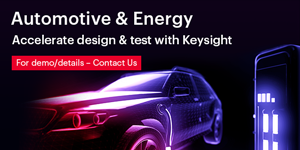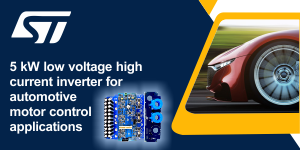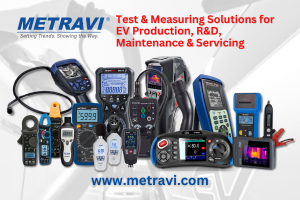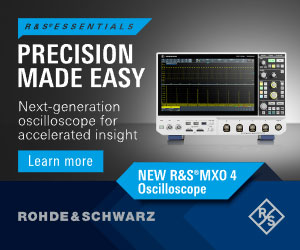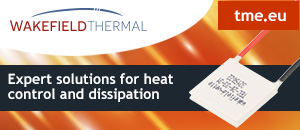Author: Soundharyaa Nandkumar (System and Test Vehicle Engineer)
Intelligent Vehicles (IVs), including self-driving cars and advanced driver-assistance systems (ADAS), are transforming modern mobility. These systems rely on sophisticated perception (environmental understanding) and robustness (system reliability under tough conditions) to detect and respond to dynamic real-world environments.
However, developing these capabilities is not enough — test detection is required to ensure
that intelligent vehicles perform accurately and safely before deployment. This involves
validating whether a vehicle can sense, process, and react to its environment in a wide range of conditions, from sunny highways to foggy urban intersections.
What Is Test Detection?
Test detection is the process of evaluating an intelligent vehicle’s ability to correctly detect
and classify environmental objects. This encompasses everything from cars and pedestrians to traffic lights and weather effects.

Main Detection Objectives:
• Object Detection: Identifying vehicles, pedestrians, cyclists.
• Traffic Element Recognition: Reading traffic signs, lights, road markings.
• Environment Understanding: Detecting Road conditions, intersections, and obstacles.
• Weather Adaptation: Functioning accurately in rain, fog, night, and glare.
These ensure the perception (environmental awareness) system is capable of safe, informed driving (Pendleton et al., 2017).
Detection System Architecture
Test detection that fits within the vehicle’s autonomous system architecture. Here’s how the
flow works:

1. Sensors: LiDAR, radar, cameras, ultrasonic, GPS, IMU
2. Data Pre-processing: Filtering and syncing sensor data.
3. Sensor Fusion (merging sensor inputs): Improves detection reliability.
4. Object Detection & Classification: Recognizes Road users and objects.
5. Semantic Segmentation (scene labelling): Differentiates lanes, curbs, roads.
6. Decision Layer: Uses detected data to plan safe manoeuvres.
Each layer is tested using simulation, HIL/SIL platforms, and real-world trials (CARLA, 2023).
Methods of Test Detection
To verify system reliability, various technical methods are employed:
1. Hardware-in-the-Loop (HIL)
Combines real vehicle parts (e.g., brake units) with virtual environments to test reactions in dangerous or complex scenarios.
2. Software-in-the-Loop (SIL)
Tests detection algorithms in a fully simulated software environment to evaluate logic
correctness before deployment.
3. Model-in-the-Loop (MIL)
Simulates vehicle dynamics and perception behavior using mathematical models and control algorithms.
4. Simulation Platforms
CARLA, IPG CarMaker, and LGSVL simulate lighting, terrain, and traffic to test detection under diverse virtual conditions (CARLA, 2023).
5. Real-World Playback
Reuses real sensor recordings to test how the system interprets past environments —
particularly useful for hard-to-replicate events like near misses.
Evaluation of test detection involves quantifying system performance. Key metrics include:
• Precision & Recall: Accuracy in detecting objects vs. missing them.
• Intersection over Union (IoU): How well detected shapes match actual objects.
• Mean Average Precision (mAP): Detection accuracy averaged over object types.
• Time to Detection (TTD): How quickly the system recognizes an object.
• False Positive Rate (FPR): Rate at which non-existent objects are wrongly detected.
These help engineers track performance, identify weaknesses, and refine models (Pendleton et al., 2017).
Difference between Simulation and Real-World Testing
Testing intelligent vehicle systems requires a smart combination of simulation (virtual testing)
and real-world trials (actual road testing). Each has strengths and limitations, and together
they ensure that autonomous systems are both effective and safe.
| Feature | Simulation Testing | Real-World Testing |
| Cost and Speed | Low-cost and fast; ideal for large-scale testing | High cost per mile and slower pace |
| Repeatability | Exact same scenario can be replayed hundreds of times for debugging | Hard to recreate the same conditions again |
| Safety | No risk to humans; dangerous situations like crashes or fog can be tested safely | Human safely is a concern, especially in edge cases (unusual or high-risk events) |
| Scalability | Thousands of scenarios can run in parallel in the cloud | Requires physical resources like test tracks and safety drivers |
| Scenario Variety | Easily simulate extreme weather, night time or rare events | Limited by what happens naturally in the environment |
| Sensor Behaviour Accuracy | May not capture all hardware limitations or sensor noise (real world inaccuracies) | True sensor performance is captured-including glitches, lens fog, or lighting artifacts |
| Regulatory | Useful for early testing but often | Critical for providing roadworthiness to |
| Approval | Not enough for safety certification alone | regulators like UNECE or NHTSA |
Why Combine Both?
Neither method alone is sufficient. Simulation allows rapid iteration and stress testing of new algorithms in a safe and cost-effective way. Real-world testing, on the other hand, exposes the system to messy, unpredictable conditions that are hard to simulate—like glare from a low sun, unexpected construction zones, or human driver behavior.
Best practice is to use a looped approach:

This enables faster learning, early bug detection, and safer deployment (Euro NCAP, 2023;
Waymo, 2020).

Lets Discuss some real world use cases
• Waymo (USA) – Simulates 25,000 driving scenarios daily. Tests edge cases like fog,
jaywalkers, or sudden debris. Helps verify performance in rare but critical events
(Waymo Safety Report, 2020).
• Baidu Apollo (China) – Uses both real-world road tests and open-source platforms to
train and validate perception. Notably tested on crowded festival routes with poor
signage (Apollo Auto, 2023).
• Tesla (USA) – Utilizes data from its vast fleet to collect millions of edge cases —
including animals, construction zones, and misaligned signs — and improve real-world
robustness.
• Toyota Research Institute (Japan) – Combines proving grounds with simulators to
tweak system response under changing lighting, congestion, and road types.
• Continental AG (Germany) – Sets up controlled test courses with artificial weather and
pedestrian dummies to evaluate detection before production.
Based on the real-world use cases, here are some of the tools and framework which are used in the process of test detection.
• CARLA: Simulation platform for AV testing.
• LGSVL: High-fidelity simulation for LiDAR, radar, and cameras.
• Apollo: Open-source stack by Baidu.
• ROS/ROS2: Middleware connecting sensors to software logic.
• OpenScenario/OpenDrive: Standards for scenario creation and road modeling.
Weather Based Challenges
Weather conditions significantly affect the performance of intelligent vehicle perception
(environmental understanding) systems. Rain, fog, snow, and low light can distort or block
sensor input, making object detection and lane recognition unreliable (less consistent or
accurate). For example, fog reduces LiDAR and camera visibility, while snow can hide lane
markings and confuse the system with reflective surfaces. Vehicles must adapt by prioritizing the most effective sensors, such as using radar instead of cameras during fog or glare.
However, building such adaptability into real-time systems remains a technical hurdle.

Key challenges include:
• Rain/fog: Scattered light or water droplets reduce vision range.
• Snow: Obscures Lane markings and signs; reflects sensor signals.
• Sun glare or night driving: Causes overexposure or low visibility.
• Sensor fusion adaptation: Systems must dynamically prioritize reliable sensors in poor
conditions.
Simulation tools like CARLA replicate such environments, but real-world validation—like
Baidu’s snowy road testing—remains essential for true robustness (reliability in tough
conditions).
In Summary – Test detection is a core part of intelligent vehicle development. It ensures that vehicles not only understand their surroundings but can also respond safely and reliably under real-world and simulated conditions. By combining AI, simulation tools, rigorous safety standards, and real-world testing, the automotive industry can accelerate the deployment of safe, intelligent mobility systems.




